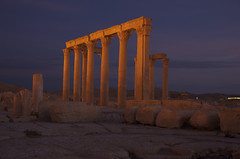Here's a post I wanted to write a while ago. I let the opportunity pass, but today it came back with a vengeance. The post is about Switzerland and money, but it's not what you think – no matter what you think.
This morning, like most mornings in winter when it's cold and foggy, I bought a ticket at the train station for my commute to work. For some reason my card wasn't working, but a ten-franc note did the trick. Among the pieces the machine spit out as change was one particularly dark and grimy. Upon closer inspection, it turned out to be minted in 1884.
I give you some time to digest this. A coin (like anything else) from 1884 is 133 years old. The little ten-cent piece has been circulating since the time the first Gotthard tunnel was dug through the Alps, doing duty like any one of its much younger cousins that gather in wallets and registers. If it didn't look exactly the same, it would be on display in a museum.
Some of the trams in Zurich or Basel could also rightfully claim their place in a museum, maybe the Swiss Museum of Transport in Lucerne. Some regional trains might also make the cut, not to say anything of the historic mountain railways. A casual visitor might infer that Switzerland is too poor to afford modern transportation. A better explanation is they're taking good care of things and don't need to replace them so often. The money saved helps make them rich.
They might take good care of their coins, but care of coins is not what makes them last more than a century without being replaced. The 133-year old coin tells you that there was no change of economic systems that required new money, no devaluation, and essentially no inflation. It sounds like the world's most boring places from a historian's point of view.
As such, the ancient little coin is an apt symbol for the country. Switzerland is a collection of villages. Though painstakingly on time, things move slowly. Not much is happening. And even a coin minted 133 years ago probably doesn't have all that many stories to tell.
The reason I wanted to write this post a while ago is that I found an old coin in my wallet before – and before. The first one was a twenty-cent piece from 1919, from right after the end of the First World War. The second was another twenty-cent piece from 1926. These two identical coins neatly bookend a period that saw twelve zeros slashed from the currency just north of the border.

